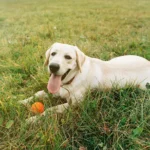Meet the French Bulldog: a small dog with a big presence.
These pups, known as “Frenchies,” were once companions to English lace makers.
When the industry moved to France, these little dogs became the French Bulldogs we adore today.
What’s Special About French Bulldogs?
Frenchies may be small, but their playful and loving nature fills a room. They love people, get along well with kids, and always crave attention, making them great family pets.
Living with a Frenchie
Because of their flat faces, French Bulldogs need a cool place to rest and can’t exercise too much. They’re perfect for short walks and are happy to relax at home with you.
Quick Frenchie Facts
- French Bulldogs don’t need a lot of space.
- They’re quiet, so they don’t bark much.
- They’re friendly and love to cuddle.
Choosing a French Bulldog means a life with a loyal, charming friend who’s always there for a snuggle.
Here’s a detailed datasheet for the French Bulldog breed:
| Category | Detail |
|---|---|
| Breed Name | French Bulldog |
| Origin | Developed in England and France, 1800s |
| Breed Group | Non-Sporting (AKC), Companion (UKC) |
| Size Classification | Small to medium |
| Weight Range | Males: 20-28 lbs (9-13 kg), Females: 16-24 lbs (7-11 kg) |
| Height Range | 11-12 inches (27-31 cm) at the withers for both males and females |
| Life Expectancy | 10-12 years |
| Coat Type | Short, smooth, and fine coat |
| Coat Colors and Markings | Brindle, fawn, white, cream, with or without patterns and markings |
| Grooming Needs | Low; occasional brushing and bathing |
| Shedding | Low to moderate |
| Temperament | Affectionate, easygoing, sociable |
| Behavioral Tendencies | Can be stubborn, playful, sometimes territorial |
| Social/Behavioral Traits | Good with children and other pets when socialized, can be protective |
| Activity Level | Moderate; requires daily walks but not excessive exercise |
| Trainability | Moderate; can be stubborn but also eager to please |
| Intelligence Level | Intelligent but can have a mischievous streak |
| Barking Tendency | Low; not known for excessive barking |
| Health Issues | Brachycephalic syndrome, allergies, spinal disorders, joint diseases |
| Dietary Needs | Prone to obesity; requires well-measured, high-quality diet |
| Suitability for | Apartment living, singles, seniors, less active individuals |
| Breed History | Bred as a companion dog from a mix of English Toy Bulldogs and local ratters in Paris |
| Exercise Requirements | Short walks and play sessions; avoid strenuous exercise |
| Space Requirements | Adaptable to small living spaces like apartments |
| Sleeping Requirements | Typically sleeps 10-13 hours a day, can be a snorer due to brachycephalic nature |
| Climate Adaptability | Sensitive to extreme temperatures, prefers moderate climates |
| Travel and Relocation Considerations | Travels well if climate-controlled; prone to heat stress |
| Compatibility Scorecard | City Living: 5/5, Families: 4/5, Novice Owners: 3/5, Exercise Enthusiasts: 1/5 |
| Ancestry and Bloodlines | Descended from ancient Greco-Roman molossoids and British bulldogs |
| Notable Traits | Bat-like ears, flat face, compact muscular body |
| Role | Primarily a companion dog |
| Care Requirements | Minimal grooming, regular vet check-ups, attention to diet |
| Cost Breakdown | Food: $20-$40/month, Grooming: Minimal, Veterinary care: $200-$600/year, Insurance: $20-$40/month |
| Training and Socialization | Early socialization is key; training should be consistent and positive |
| Time Commitment | Daily interaction and companionship are necessary; does not like being alone |
| Enrichment Activities | Puzzle toys, short games of fetch, social playdates |
| Common Training Mistakes | Being too harsh or inconsistent; not addressing stubbornness early on |
| Seasonal Care | Cooling mats in summer, warm clothing in winter due to poor temperature regulation |
| Allergy Considerations | Low shedding may be suitable for mild allergy sufferers |
| Health Screening | Recommended to have breathing, spine, and joint evaluations |
| Insurance Recommendations | Consider policies that cover hereditary conditions common to the breed |
| Mental Stimulation Needs | Moderate; enjoys engaging play and learning tricks |
| Kennel Club Recognitions | AKC, UKC, FCI, and others |
| Breed Standards | Compact, muscular dog with a smooth coat, solid bone structure, and a pug nose |
| Litter Size | 3-5 puppies |
| Level of Protection | Low; not a traditional guard dog but can be alert and protective |
| Participation in Dog Sports | Limited due to physical structure; however, can participate in obedience and agility suited to their capabilities |
| Noise Level | Generally quiet; some snort, snuffle, and snore due to their flat faces |
| Odor Level | Low; regular cleaning of facial wrinkles is required to prevent odor |
| Watchdog/Alarm | Moderate; will alert owners to unusual activities |
| Therapeutic Use | Often used as therapy dogs due to their gentle and loving nature |
| Cultural Significance | Popular in urban settings, featured in many films and media |
| Rescue Organizations | French Bulldog Rescue Network, French Bulldog Village |
| Certification and Testing | Heart, hips, knees, and eyes certifications are recommended |
| FAQ Section | Q: Can French Bulldogs swim? A: No, their structure makes it difficult and dangerous for them to swim. Q: Are French Bulldogs good with kids? A: Yes, when properly socialized. Q: How much exercise does a French Bulldog need? A: Short daily walks and play sessions; they are not endurance dogs. |


